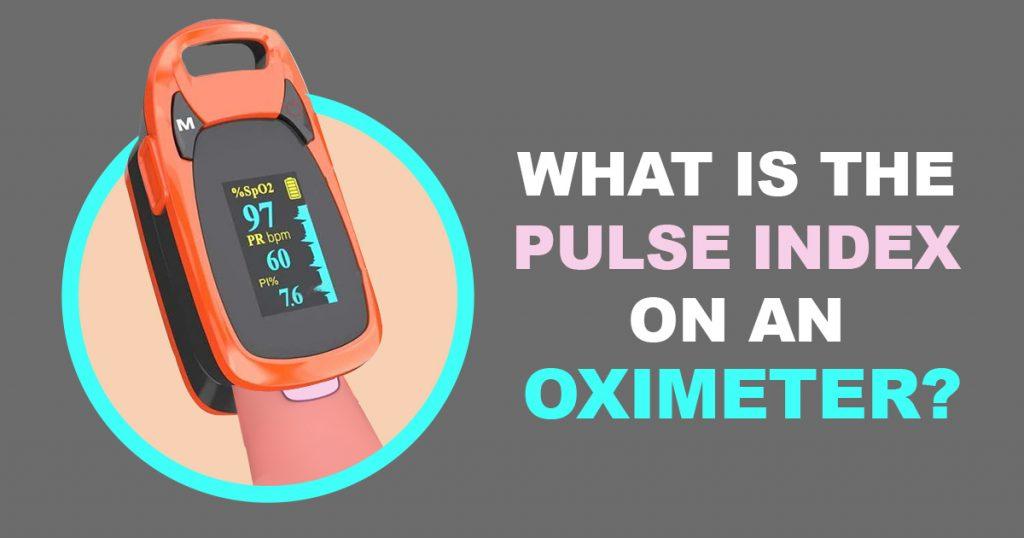A pulse oximeter is a tiny gadget that checks how fast your heart beats and how much oxygen is in your blood. It shows how well your blood carries oxygen around your body. You usually put a pulse oximeter on a part of your body that has a lot of tissue, like your finger, nose, foot, forehead, earlobe, or toes. These devices are often used in places like hospitals, clinics, and even at home.
Also, pulse oximeters can measure the perfusion index (PI). Let’s explain what PI measures, its usual range, and how it’s used in medical situations.
What is PI on an oximeter?
The Perfusion Index shows the amount of pulsing blood compared to non-pulsing blood. It helps to see how well blood is moving in your body without needing to do anything invasive. Basically, it tells us how strong your pulse is or how well blood is flowing.
What’s the normal PI on an oximeter?
The usual perfusion index (PI) can be anywhere from 0.02% to 20%. But, there’s no one set “normal” value that everyone agrees on. So, it’s important for people to find out what their own starting value is and then keep an eye on any changes over time.
If your perfusion status isn’t good, it could be because of things like artery disease, diabetes, being overweight, blood clots, or other health issues.
Perfusion Index (PI) Percentage
When the PI is higher (close to 20%), it means your arteries are wide open, or your blood flow is really strong.
When the PI is lower (close to 0.02%), it means your arteries are narrow, or your blood flow is very weak.
Clinical Applications of Perfusion Index
In hospitals and clinics, doctors use PI to see how well medicines work or to keep an eye on how a disease is getting worse. Other ways they use it include:
Anesthesia Onset Indicator
Anesthesiologists often rely on the perfusion index to check if anesthesia is working as it should.
Here’s how it works: When the perfusion index suddenly goes up, it usually means the anesthesia is starting to work well. But if the number stays the same without any change, it might mean the anesthesia isn’t working properly, which could be a sign of trouble.
Pain Indicator
The perfusion index can be a helpful tool for doctors to understand if someone is in pain.
This is especially important for patients who can’t talk or express how much they’re hurting. In these cases, doctors can use the perfusion index to figure out how much pain the person might be feeling. This helps them decide the best way to help manage the pain and make the person feel better.
Neonatal Care
The Perfusion Index can tell doctors if newborn babies are very sick.
For instance, if a baby’s foot skin Perfusion Index is less than 1.24, it can mean the baby is very ill. Doctors in the neonatal intensive care unit (NICU) often use this number to understand how serious the baby’s sickness is. It helps them decide what treatments the baby might need to get better.
Optimal Pulse Oximetry Site
Moreover, the Perfusion Index can help doctors find the best spot to monitor a person’s pulse with an oximeter.
A good spot to monitor will have a high and steady perfusion index. This means the blood in that spot has plenty of oxygen. By finding the best spot to put the oximeter, doctors can get the most accurate readings to keep track of someone’s health.
To wrap up, the Perfusion Index is a way to check how strong someone’s pulse is without doing anything invasive. It’s used in many different medical situations. Also, remember that the Perfusion Index can be different depending on where it’s measured on the body and from person to person.
Understanding What PI Means in a Pulse Oximeter for Better Usage
Learn more about the amazing benefits of pulse oximeters and perfusion index in monitoring your health. Whether you’re at home, in the hospital, or in need of neonatal care, understanding what PI is on a pulse oximeter can make a big difference in your well-being. Take control of your health today!
